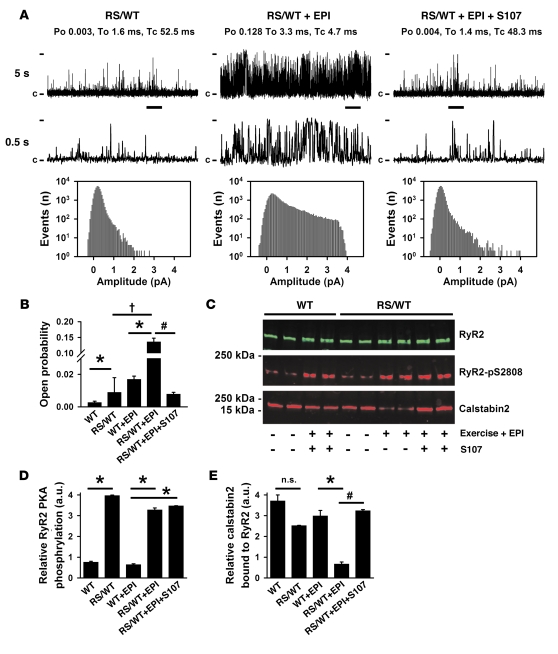Figure 6. RyR2 channels from heterozygous Ryr2RS/WT hearts show a gain-of-function defect that is rescued by S107 treatment.
(A) Representative single-channel traces from isolated from the hearts of sedentary Ryr2RS/WT mice (RS/WT), after maximal exercise followed by injection of 0.5 mg/kg epinephrine (RS/WT + EPI), or after 1 week treatment with S107 (5 mg/kg/h) followed by maximal exercise and EPI injection (RS/WT + EPI + S107). Thick horizontal bars below 5-second traces indicate area shown in 0.5-second traces. Po, mean open (To) and mean (Tc) closed times, closed state (c), and fully open level (4 pA) are as indicated. Corresponding all-point histograms demonstrate altered current amplitude distribution, including multiple subconductance states and full open events in the EPI group, consistent with a gain-of-function defect. In contrast, S107-treated group histograms show redistribution toward closed states. (B) Average Po of single cardiac WT and Ryr2RS/WT channels under different treatment conditions. Single-channel measurements were performed in low activating Ca2+ concentrations (150 nM) to mimic diastolic conditions. *P < 0.05 versus hearts from sedentary mice; #P < 0.05 versus hearts from exercise- and EPI-treated mice; †P < 0.05 between sedentary and EPI-treated Ryr2RS/WT mice. Each bar represents the average of 7 channels. (C–E) Equivalent amounts of RyR2 were immunoprecipitated with an RyR2-specific antibody followed by immunoblotting: amounts of relative PKA phosphorylation of RyR2 at Ser2808 (D) and of calstabin2 bound to RyR2 (E) under the indicated conditions. Data refer to the same cardiac vesicles used in A and B. *P < 0.05 versus hearts from sedentary mice; #P < 0.05 versus hearts from exercise- and EPI-treated mice.

